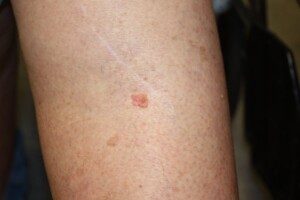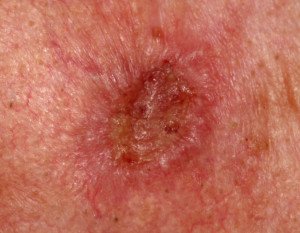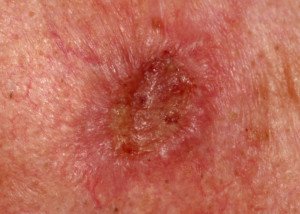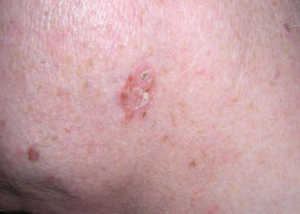Squamous cell carcinoma is a potentially fatal skin cancer that can arise in multiple locations in a rather short period of time.
Most deaths are believed to occur in the elderly, who are more likely to delay seeing a doctor for a gradually growing pink/red scabby lesion on their face, nose or scalp.
It’s estimated that there are over a million newly diagnosed cases of squamous cell carcinoma in the U.S. every year.
“An accumulation of sun damage over many years can result in many squamous cell carcinomas appearing in a short time period,” says Dr. Janet Prystowsky, board certified dermatologist in New York, NY, with 30+ years’ experience.
Dr. Prystowsky adds, “An injury to heavily sun damaged skin can also instigate SCC growth.”
Skin Conditions that Can Incite Squamous Cell Carcinoma Development
• Burns
• Ulcers
• Scars
• Unhealed sores
• Areas with previous X-ray exposure
• Exposure to radiation from tanning beds
The absence of the above skin conditions does not mean you have a low risk of squamous cell carcinoma.
Remember, excessive sun exposure over the years is a major risk factor — even if you tan easily.
Several Squamous Cell Carcinomas in a Short Time Period
It’s not uncommon for people to develop a second SCC near the location where the first one had developed.
This is because the neighboring skin is just as damaged by sun exposure as the skin where the first SCC had arisen.
So if someone develops a lot of squamous cell carcinoma lesions, it won’t be any surprise that they’re in the same vicinity, such as clustered on the face, scalp, back or leg — which are areas that are frequently exposed to the sun’s harmful rays.

Shutterstock/Jannarong
“Immunosuppressed people may notice many squamous cell carcinomas appearing in a short time period, whether they are on immunosuppressive medication or have an immunosuppressive illness,” says Dr. Prystowsky.
Catching Squamous Cell Carcinoma in Its Tracks

Squamous cell carcinoma on a leg. Source: NCI
This is a slow growing skin cancer that often arises first as a precancerous lesion called an actinic keratosis.
These lesions of atypical cells need to be removed so that they don’t, years later, transition into a malignancy.
The removal of actinic keratosis is done either with a spraying of liquid nitrogen to freeze the abnormal cells, or the application of a prescription ointment.











































